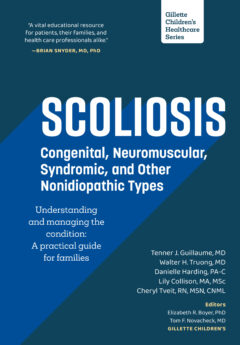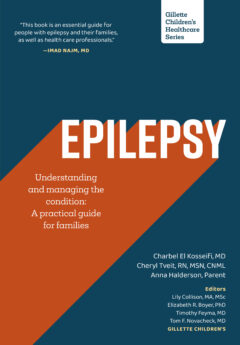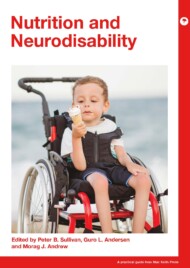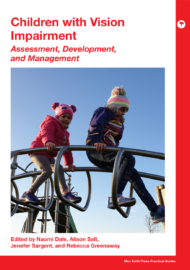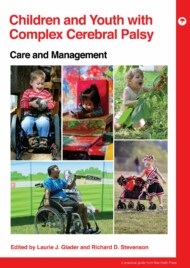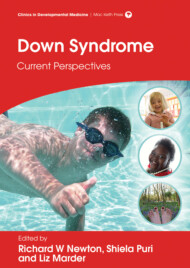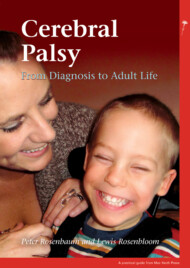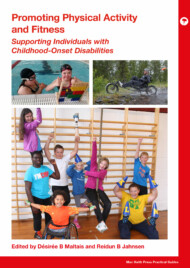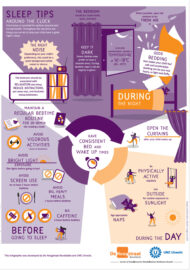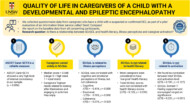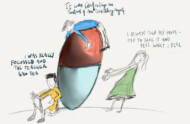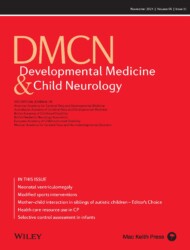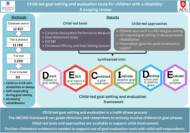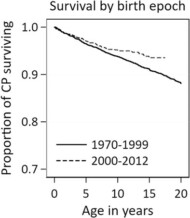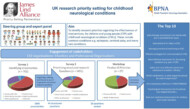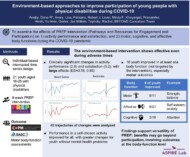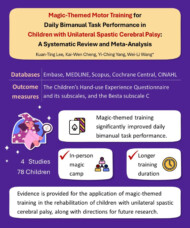Welcome
Start exploring here! We hope this will be a useful resource to help you find the information you need about cerebral palsy and other childhood-onset disabilities. We want to help you to find answers to your questions – so please let us know what else you would like us to cover. Here we are presenting videos, summaries, research information and other resources.
Read on for more
Ways we can help
1
Family-friendly Books
Discover our collection of family-friendly books featuring accessible, research-based insights. These titles include the perspectives of families and individuals with lived experience, offering valuable guidance while supporting parents on their journey.
2
Free Chapters
We have selected a range of chapters from our books, offering helpful insights and practical tips. Our chapters summaries highlight key points. View the full chapter to explore each topic in more depth.
3
The Knowledge Bank
Explore the answers to your questions here. Find out more about conditions, treatments, interventions, and all aspects of care. Follow signposts to find more in-depth, evidence-based information from Mac Keith Press content, as well as other great sources of knowledge.
4
Plain Language Summaries
Plain language summaries are an effective way of communicating scientific research to a wider audience. By presenting the key findings and significance of a study in easy-to-understand language, the content becomes more accessible to more people. Here we present summaries of papers published in Developmental Medicine & Child Neurology (DMCN).
5
Helpful Videos
Here you will find a collection of short videos from authors and editors summarising their work. They cover Developmental Medicine & Child Neurology (DMCN) articles, Mac Keith Press books and e-learning. The aim of the videos is to help viewers get a clear understanding of why the research is important, how it was carried out, and real-world implications.
Gillette Children’s Healthcare Series
The goal of the Gillette Children’s Healthcare Series is to empower families through a greater understanding of their condition and therefore help optimize outcomes for children, adolescents and adults living with these childhood-acquired and largely lifelong conditions.
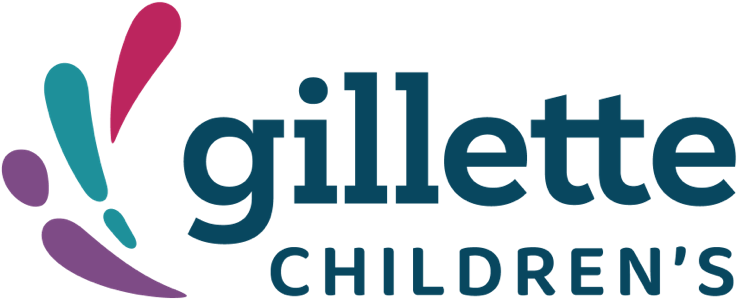
Free chapter downloads
The Knowledge Bank
Explore the answers to your questions here. Find out more about conditions, treatments, interventions, and all aspects of care. Follow signposts to find more in-depth, evidence-based information from Mac Keith Press content, as well as other great sources of knowledge.
Will scoliosis get worse over time?
While not the only outcome, scoliosis can get worse over time, particularly if left untreated. Untreated severe idiopathic scoliosis will continue to progress which may negatively impact health and quality of life.
Will scoliosis get worse over time?
This answer is adapted from the Gillette Children’s Healthcare Series book on Idiopathic Scoliosis.
While not the only outcome, scoliosis can get worse over time, particularly if left untreated. Untreated severe idiopathic scoliosis will continue to progress which may negatively impact health and quality of life.
By utilizing tools such as X-ray imaging, physical examination, and assessments of skeletal maturity, healthcare professionals can identify key risk factors of curve progression such as:
- Curve size: As the size of the curve increases, the risk of progression also increases. Scoliosis curves greater than or equal to 50 degrees have the highest risk of progression. Thus, a curve of 50 degrees or greater is typically the threshold for recommending surgical intervention because it is believed that the benefits of surgery typically outweigh the risks.
- Curve location: Scoliosis curves located in the thoracic region of the spine have the highest risk of progression.
- Skeletal maturity: Children and adolescents who are still growing (skeletally immature) are more likely to have progression of their scoliosis curves than older adolescents who are near the end of their growth (skeletally mature).
- Early adolescence: Early adolescence is associated with an acceleration in the rate of growth, which is associated with an increased risk of curve progression.
A skilled spine care team can use these factors to make informed, individualized treatment decisions. With consistent follow-up, evidence-based care, and a shared decision-making approach, most individuals with idiopathic scoliosis can expect to lead healthy, active, and fulfilling lives, free from the negative impacts that unchecked progression might otherwise cause.
What are the main treatment options for scoliosis?
Treatment options for scoliosis can range from nonsurgical methods, such as observation with repeat X-rays, to surgical methods, such as spinal fusion.
What are the main treatment options for scoliosis?
This answer is adapted from the Gillette Children’s Healthcare Series book on Idiopathic Scoliosis.
Treatment options for scoliosis can range from nonsurgical methods, such as observation with repeat X-rays, to surgical methods, such as spinal fusion. Treatment options include the following:
- Observation: Regular spine X-rays and clinical exams with a spine specialist to monitor scoliosis curve for possible progression.
- Bracing: A spinal brace that applies corrective forces to the spine to slow or stop scoliosis curve progression.
- Casting: A full-torso cast (hardened plaster or fiberglass that must be cut off to remove) that applies corrective forces to the spine to improve the scoliosis curve (decrease the Cobb angle) or slow or stop scoliosis curve progression.
- Surgery: Surgery performed to prevent future progression and improve the scoliosis curve (decrease the Cobb angle). There are many types of scoliosis surgery. The most common type is spinal fusion, defined as fusing (joining together) two or more vertebrae in the spine; screws and metal rods are typically used to hold the spine in the straightened position and facilitate fusion between bones.
As the child grows, the risk of scoliosis progression may increase or decrease, resulting in treatment plans changing. It is common for an individual to undergo multiple treatment types over the course of their childhood and adolescence. For example, an individual may be observed for a period of time, then prescribed bracing treatment if their curve progresses.
The appropriate treatment chosen and the related goals depend primarily on individual patient goals and specific treatment indications. Indications include, but are not limited to, size of the curve, risk of curve progression, and skeletal maturity of the child.
Treatment indications and goals may vary at other hospitals and treatment centers. Surgical guidelines are general and depend on the surgery type and clinical practice continually evolves.
It is important to note that for most individuals, scoliosis cannot be “cured” (i.e., to achieve a Cobb angle less than 10 degrees). For some children with infantile idiopathic scoliosis, their curve may spontaneously resolve, or casting treatment can reduce the curve to less than 10 degrees, but that is the exception. The more common outcome and realistic goal is to have a small enough residual curve after treatment that will not adversely affect quality of life.
How effective is bracing at stopping curve progression in individual with idiopathic scoliosis?
In individuals with idiopathic scoliosis, two outcomes commonly used to measure bracing success are:
- Five degrees or less of curve progression during brace treatment
- Avoiding surgery (typically meaning that the Cobb angle does not progress to 50 degrees or more)
How effective is bracing at stopping curve progression in individual with idiopathic scoliosis?
This answer is adapted from the Gillette Children’s Healthcare Series book on Idiopathic Scoliosis.
In individuals with idiopathic scoliosis, two outcomes commonly used to measure bracing success are:
- Five degrees or less of curve progression during brace treatment
- Avoiding surgery (typically meaning that the Cobb angle does not progress to 50 degrees or more)
When a scoliosis curve progresses 6 degrees or more during brace treatment, or if surgery is recommended due to curve progression beyond 50 degrees, this may be called “treatment failure.” Successful bracing treatment in AIS is correlated with wear time. In a landmark multicenter, randomized controlled trial, two groups of individuals with AIS were studied: a full-time brace treatment group and an observation group that did not wear a brace. The brace treatment group was successful in preventing progression to 50 degrees 75 percent of the time compared to the observation group, which was successful only 42 percent of the time. Adolescents who wore the brace for more hours had a greater chance of success with brace treatment.
Although wear time is extremely important, the risk of treatment failure is not equal for all individuals with AIS, even with perfect adherence to the prescribed wear time. The following full-time brace failure risk factors have been identified for individuals with AIS:
- Poor adherence to prescribed full-time wear (less than 10 to 13 hours per day).
- Significant amount of growth remaining at the start of brace treatment (Risser 0, triradiate cartilage open). For example, individuals with open triradiate cartilage at baseline have a 30 percent greater risk of treatment failure than those with closed triradiate cartilage at baseline.
- Cobb angle greater than or equal to 40 degrees prior to reaching adolescent growth spurt. For example, individuals with a 40-degree curve at baseline had a 40 percent greater risk of treatment failure than individuals with a 25-degree curve at baseline.
- Poor correction of the scoliosis curve in the brace as seen on the first in-brace X-ray.
- Large amount of vertebral rotation (rotation of the spine in the axial plane).
- Curves in the thoracic region
- Osteopenia (a lower bone density than is typical for the individual’s age in the general population).
- Higher body mass index (BMI), which can make it difficult to achieve adequate brace fit and in-brace curve correction.
Knowing these risk factors, spine specialists choose appropriate candidates for brace treatment, meaning those who are most likely to benefit from wearing the brace. Clinical tools, such as risk calculators, can guide spine specialists, orthotists, individuals and their families in being able to assess the risk of progression by using their baseline characteristics. Together, they can decide if treatment with a brace is likely to be beneficial and therefore warranted.
How do we know if scoliosis surgery is necessary?
Surgery is generally only considered necessary for infantile idiopathic scoliosis when scoliosis curves progress to a severe degree that threatens spinal function, cardiopulmonary health, or quality of life.
How do we know if scoliosis surgery is necessary?
Surgery is generally only considered necessary for infantile idiopathic scoliosis when scoliosis curves progress to a severe degree that threatens spinal function, cardiopulmonary health, or quality of life. Depending on the individual, surgery may be recommended to decrease curve progression, improve the scoliosis curve (decrease the Cobb angle) while allowing continued spine and chest wall growth.
For Juvenile idiopathic scoliosis and adolescent idiopathic scoliosis surgical treatment may be considered necessary if the Cobb angle reaches or exceeds 45–50 degrees, especially if the curve continues to progress and is having a negative impact on the child’s health and quality of life.
This answer is adapted from the Gillette Children’s Healthcare Series book on Idiopathic Scoliosis.
Surgery is also typically considered when non-surgical treatments fail to stabilize the curve or when there is a high risk of further deterioration that would impact long-term health and function. The decision is made by a spine specialist using clinical evaluation, imaging (such as X-rays), and patient-specific factors like age, skeletal maturity, and curve pattern.
Submit a question
Let us know what other questions you have. Are there specific topics you would you like us to cover?
Contact us now using the form.
Plain Language Summaries
Plain language summaries are an effective way of communicating scientific research to a wider audience. By presenting the key findings and significance of a study in easy-to-understand language, the content becomes more accessible to individuals with disabilities, parents, caregivers, and others. Here we present summaries of papers published in Developmental Medicine & Child Neurology (DMCN).
Helpful videos
Here you will find a collection of short videos from authors and editors summarising their work. They cover Developmental Medicine & Child Neurology (DMCN) articles, Mac Keith Press books and e-learning. The aim of the videos is to help viewers get a clear understanding of why the research is important, how it was carried out, and real-world implications.
UK research priority setting for childhood neurological conditions| Jill Cadwgan & Rhys Inward |DMCN
Contact us
Please feel free to contact us if you have any feedback or suggestions:
